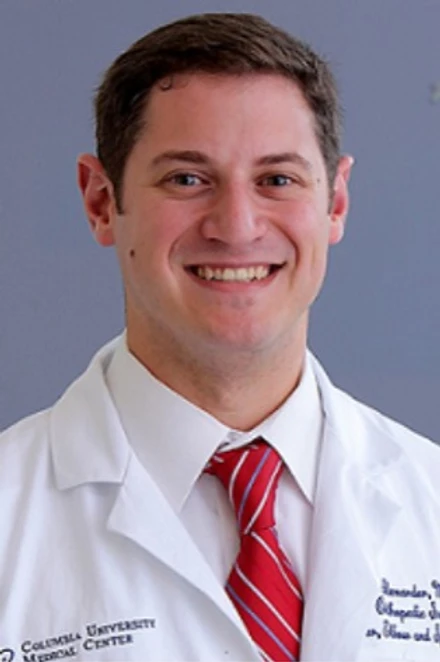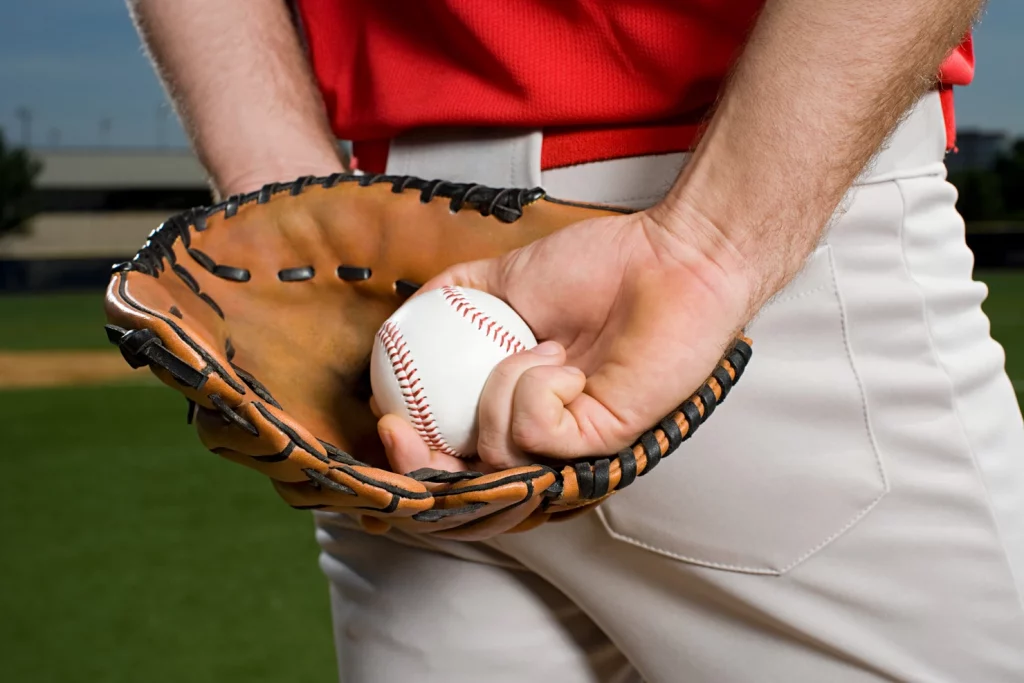- How Parents should educate their kids about the risks of playing through pain and encourage them to report any injuries to receive proper medical attention.
- Why it’s important to avoid early specialization in baseball and encourage children to participate in a variety of sports to reduce the risk of shoulder and elbow injuries and prevent burnout.
- What are the early signs of baseball elbow injuries to watch out which can be an indicator of a UCL tear and may require conservative treatment or Tommy John surgery.
Staff at Myokinetix spoke with an expert on elbow and shoulder injuries of throwing athletes, Frank Alexander. He is also a part of the NY Yankees working alongside their team physician. These are some tips he shared with us!
How to Avoid Tommy John Surgery & Baseball Injuries
1. Teach your kids about the dangers of playing through pain.
Parents, it’s extremely important to ask your kids how they feel on the ride home from a practice or game.
Here’s why.
An estimated 75% of youth baseball players, ages 11-13, will play through pain. According to Frank, this is the biggest reason why kids are seen in doctors’ offices, which is unfortunate since it’s something that can easily be addressed during and after a game.
Playing through pain can lead to serious consequences like injury, the need for surgery, or unhealthy habits regarding injury reporting. Encourage your kids to vocalize their pain as opposed to the “walk-it-off” mindset. If your athlete does report an injury, use the resources at the school, training facility, or the pediatrician’s office to ensure your child receives proper medical attention.
2. Avoid early specialization in one sport.
There are several reasons to avoid specializing in baseball at an early age. Not only does this predispose your child to baseball shoulder and elbow injuries, but it also enhances weakness in underdeveloped parts of the body.
Instead, encourage your child to play a variety of sports throughout the year. In doing so, you are decreasing the risk of injuries while preventing your child from experiencing sports burnout. “Playing more sports makes your kid well-rounded and keeps things interesting,” Frank notes. “This helps prepare them for success more than anything else.”
3. Watch for early signs of baseball elbow injuries.
Did you know that the shoulder moves at a rate of 8000 degrees/second while throwing? The elbow also generates high-velocity speeds and can move at 3000 degrees/second before the ball is released. Unsurprisingly, this amounts to a significant amount of force that is generated at the shoulder and elbow joints.
“The Ulnar Collateral Ligament (UCL) fails at somewhere around 30-32 Nm of force, and we throw at upwards of 60 Nm,” says Frank. “So, in theory, you should tear your UCL every time you throw a baseball. The reason why you don’t [tear your UCL] is due to the flexor muscle group that protects the UCL, like a seatbelt,” Frank explains.
Ultimately, baseball players who develop flexor strains in the forearms have an increased risk of UCL injury. “Flexor strains are [an early indicator] of UCL tears, so it’s good to take care of this as soon as possible,” Frank advises.
According to Frank, UCL tears are a common reason why baseball players are seen in the office. Typically, athletes will report pain on the inside of the elbow with an audible “pop.” Treatment for UCL tears is either conservative (bracing) or Tommy John surgery.
What Is Tommy John Surgery?
Tommy John’s surgery is a full repair and reconstruction after a UCL tear. Following the surgery, it may take a year until baseball players can return to the field. Recovery usually consists of 4.5 months of physical therapy, 4.5 months of playing catch on flat ground, and the last 3 months on the mound. Understand that every athlete’s recovery and timeline will vary.
Incomplete UCL repairs are less involved and will take about five months (2.5 months of rest and 2.5 months of rehab) before the athlete can play again. For those with baseball elbow injuries that are considered to sprain only, recovery might include PRP injections with six weeks of rest followed by six weeks of rehab. Oftentimes, your child’s physical therapist and athletic trainer will work around playing and off seasons to optimize healing and recovery times. Depending on these factors, the goal of returning to baseball could possibly speed up or move slower.
But keep in mind that not all baseball elbow injuries lead to Tommy John’s surgery. “Typically, the first thing to look for is the duration and severity of symptoms,” notes Frank. Outcomes are always better when the injury is new, which emphasizes the importance of not playing through pain. “For kids who don’t have a severe tear but are still symptomatic after three weeks, there is a reduced likelihood that they will get better,” Frank admits. In these cases, it’s likely that the injury has been present for a while.
Keeping Your Baseball Player Healthy
The secret to keeping your baseball player healthy “is not about getting a fancy bat or special cleats but rather about the little things,” says Frank. “It’s about sleeping enough and eating right.”
Developing healthy behaviors now can set the stage for long-lasting habits and a successful athletic career in baseball. This includes behaviors on injury reporting. “Parents should encourage their kids to talk about how they’re feeling and if they have any pain or discomfort while playing,” Frank states.
Additionally, young baseball players should be taught to pay extra attention to their bodies after returning from injury. “A big factor is fatigue because athletes need the right amount of rest and sleep,” notes Frank. Fatigue can also lead to performance errors, injury, and decreased self-confidence when playing. To ward off the consequences of fatigue, “it’s important to rest enough in between your outings and in between each inning. [Don’t forget to consider] how much stress is put on you in the actual game, and the time you’re playing within each game,” Frank advises.
More on Frank Alexander, MS, ATC
Frank Alexander is the athletic trainer for Dr. Chris Ahmad, an orthopedic surgeon and team physician for the New York Yankees. Throughout the past decade, Frank has worked with elite athletes and teams across the northeast region including the NY Yankees, NY Boulders, and the NYCFC. Frank’s clinical expertise is in the treatment of baseball shoulder and elbow injuries, and his research interests are focused on UCL injuries in professional baseball players.
Frank’s passion for athletic training developed from his childhood love of baseball and experience as a former collegiate player. He takes pride in educating parents, coaches, and athletes about baseball elbow injuries to ensure that they stay on the field and out of medical offices.

To hear more about Frank’s experiences and baseball tips, check out the full Myokinetix Podcast episode here.

